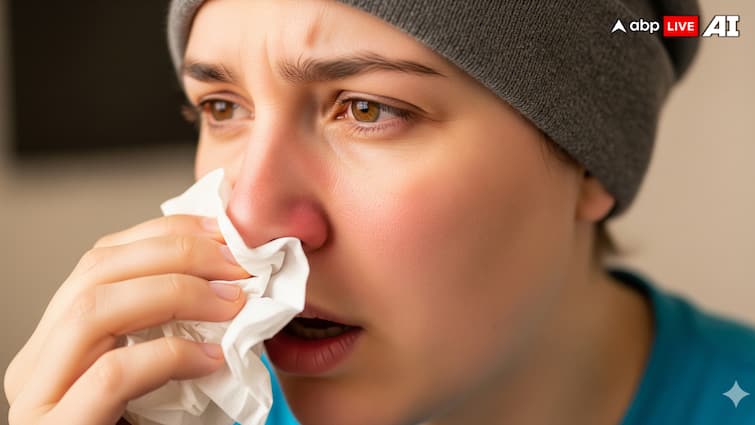Recently, a popular YouTuber and influencer, Steve Bartlett, invited James Nestor — the American journalist and author of the bestselling book Breath: The New Science of a Lost Art, who claimed that a simple exercise like humming can help a person get rid of rhinitis.
What is Rhinitis?
According to Hopkins Medicine, rhinitis occurs when a reaction causes nasal congestion, runny nose, sneezing, and itching. Most types of rhinitis are linked to inflammation and may also cause symptoms in the eyes, ears, or throat.
James Nestor and the Breathing Movement
An article in Family Medicine (the official journal of the Society of Teachers of Family Medicine) notes that Nestor’s NY Times bestseller book “Breath: The New Science of a Lost Art” takes a journalistic approach to explore the science and history of breath training. Nestor frequently discusses nasal health, breathing science, and even the surprising benefits of humming, matching his viral “insane benefits of humming” claim.
In an interview transcribed by the University of Arizona, Nestor said: “(Humming) releases 15 times the amount of nitric oxide. So that’s a great trick, especially now knowing that nitric oxide interacts directly with viruses and other pathogens.” He also added that humming stimulates the vagus nerve and can trigger a positive immune response.
What Do Doctors Say?
To understand whether humming regularly can cure rhinitis, ABP News spoke to Dr Arjun Khanna, HOD, Pulmonology, Amrita Hospital, Faridabad.
“A lot of things circulate on social media that do not have solid scientific evidence behind them, and this seems to be one of those trends. This is not something I would ever recommend to my patients, nor is it backed by medical guidelines or robust research. While there is no proven evidence that humming can treat rhinitis or release nitric oxide in a clinically meaningful way, I also don’t see any harm in doing it. It’s certainly not harmful, and if someone finds it enjoyable, there’s no reason to stop. But it should not be mistaken for a medical treatment or advice. At best, it’s just a fun activity, nothing more,” Dr Khanna said.
What is the Vagus Nerve and Vagus Nerve Stimulation?
According to the Cleveland Clinic, the vagal nerves carry signals between the brain, heart, and digestive system, and form a key part of the parasympathetic nervous system. Damage to these nerves can lead to conditions such as gastroparesis.
Vagus Nerve Stimulation (VNS) is an approved medical therapy for epilepsy and depression. However, Dr Khanna clarifies: “Although vagus nerve stimulation is an accepted medical therapy for certain neurological and psychiatric conditions, there is no strong clinical evidence to show that casual humming provides measurable benefits.”
Yogic Connection: Bhramari Pranayama
Interestingly, an Indian study published in Indian OtoLaryngology and Head and Neck Surgery in PubMed explored the role of Bhramari Pranayama, a yogic breathing practice that involves humming during exhalation.
During the COVID-19 pandemic, the study claimed that Bhramari enhanced nitric oxide expression, helped prevent complications, reduced pulmonary hypertension, and improved survival rates in patients with severe infections.
Dr Khanna acknowledges its potential — but with caution:
“Bhramari Pranayam uses a humming sound during exhalation. In yoga and meditation, this is linked to relaxation, slower breathing, and a calming effect on the nervous system. From a physiological standpoint, the practice encourages slower, deeper breaths, which can help lower stress and improve focus. However, it is important to highlight that these benefits focus more on overall well-being and mind-body relaxation rather than serving as a specific treatment for rhinitis or other respiratory issues.”
“So, while practices like humming or Bhramari Pranayam may have a calming effect on breathing and mental clarity, they should not be seen as medical advice or treatment,” he added. While humming or Bhramari Pranayama may support relaxation, there is no scientific evidence that they can cure rhinitis. At best, they may complement healthy breathing practices, but they should not replace medical diagnosis or treatment.
[Disclaimer: The information provided in the article, including treatment suggestions shared by doctors, is intended for general informational purposes only. It is not a substitute for professional medical advice, diagnosis, or treatment. Always seek the advice of your physician or other qualified healthcare provider with any questions you may have regarding a medical condition.]
Check out below Health Tools-
Calculate The Age Through Age Calculator



